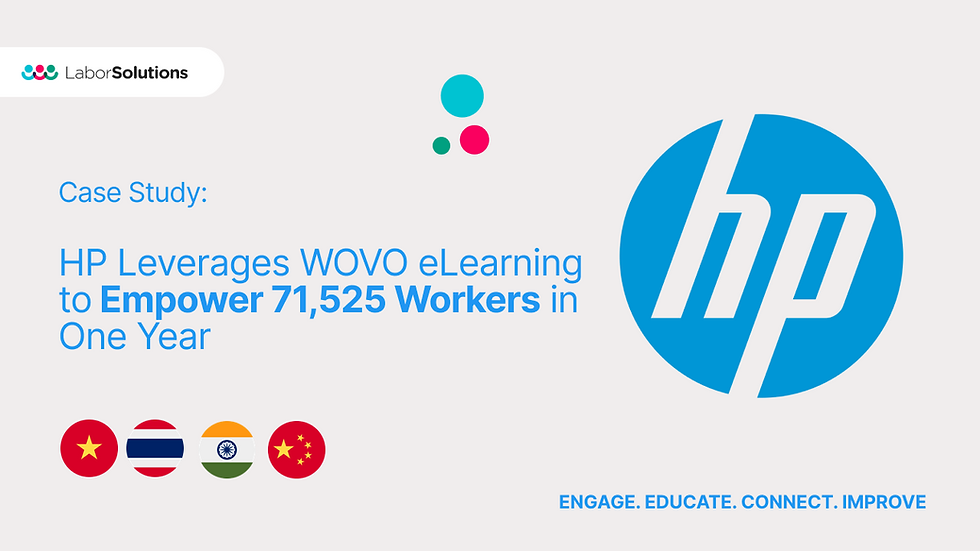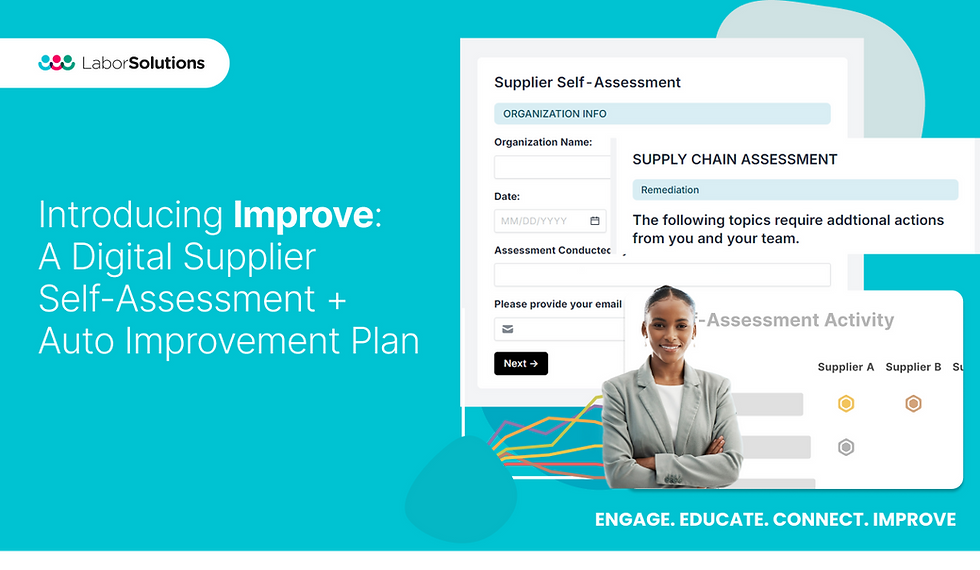WOVO: A More Inclusive + Engaging Interface
- Labor Solutions

- Jan 3, 2022
- 3 min read
Updated: Jan 12, 2022
Labor Solutions' leading worker technology platform, WOVO, currently serves over 1.5 million workers. To continue to support users and expand its reach, WOVO has been updated with a more inclusive, intuitive and worker centric user interface.
The WOVO team uses iterative design practices, constantly collecting user feedback to create an intuitive and worker-centric app. In WOVO's most recent iteration, the Labor Solutions' tech and design team focused on expanding and simplifying access.
Democratizing Access
WOVO serves workers globally with a diversity of literacy and technology literacy. UI that relies too heavily on texts further alienates vulnerable illiterate populations and restricts access to valuable information and opportunities. As WOVO's footprint expands, the design team has focused on building interfaces and tools to serve a wide population and support illiterate users without compromising literate user’s experience.
Communicating information in a visually engaging way
For security reasons, workers go through simple registration to use the WOVO App. This process has never been easier - we chose to include a visual representation in our App registration process with icons recognizable to the average worker and placed to enhance both literate and illiterate users’ understanding.

Personalization through avatars and security questions engages WOVO App users with maximum safety and anonymity. We introduced a selection of avatars and illustrations for security questions workers can choose from to facilitate the registration and login process.

Balance in flexibility and restrictions
How do illiterate users respond to questions if they don’t know how to type out an answer?
One thing we learned in our research and outreach is that we should not underestimate illiterate users’ technology understanding. Many illiterate users are still active users of smartphones, choosing to watch and share videos on Facebook or YouTube, and already very familiar with numbers.
Most of our security questions can be answered with numbers, for example, When is your mother’s birthday? and When did you meet your spouse? Another decision we made was to change from using an alphanumeric and case sensitive password to a simple 6-digit PIN code. While complex passwords can be set up to be more secure, this comes at the cost of the user easily forgetting such a complex arrangement of number, letters, and symbols. In most cases we also find that many users opt to create easy to remember words which also makes them easier to guess by other users. Using a numerical PIN code both includes illiterate users by restricting them to use characters they are already familiar with and reduces the risk of a user forgetting vital login information.

Visual aids in navigation and orientation
Illiterate users cannot fall back on page titles or button names to figure out where they are and what must be done on the screen. Without visual guidance, illiterate workers’ sense of orientation and navigation relies entirely on memory.
We chose to include a visualization of the steps needed along the WOVO app’s user journey, including registration, submitting a grievance, taking a survey or completing an eLearning lesson. Not only does this help with understanding of where they are in the process, but it also builds anticipation of completing it.
Removing unnecessary information and steps
Finally, the most important step was to make sure users are not overwhelmed by too much information on our tools. We removed unnecessary subtitles, kept instructions concise, and created a style that only asks the minimum from our user per screen.
All these considerations work to include more workers in the WOVO community.
Labor Solutions is committed to publicly sharing our UX and UI design thought process to push industry thinking towards more inclusive and holistic worker engagement strategies. If you’re interested in joining our continuous improvement process or starting a conversation about open, engaging, and inclusive design for workers, get in touch at info@laborsolutions.tech.


